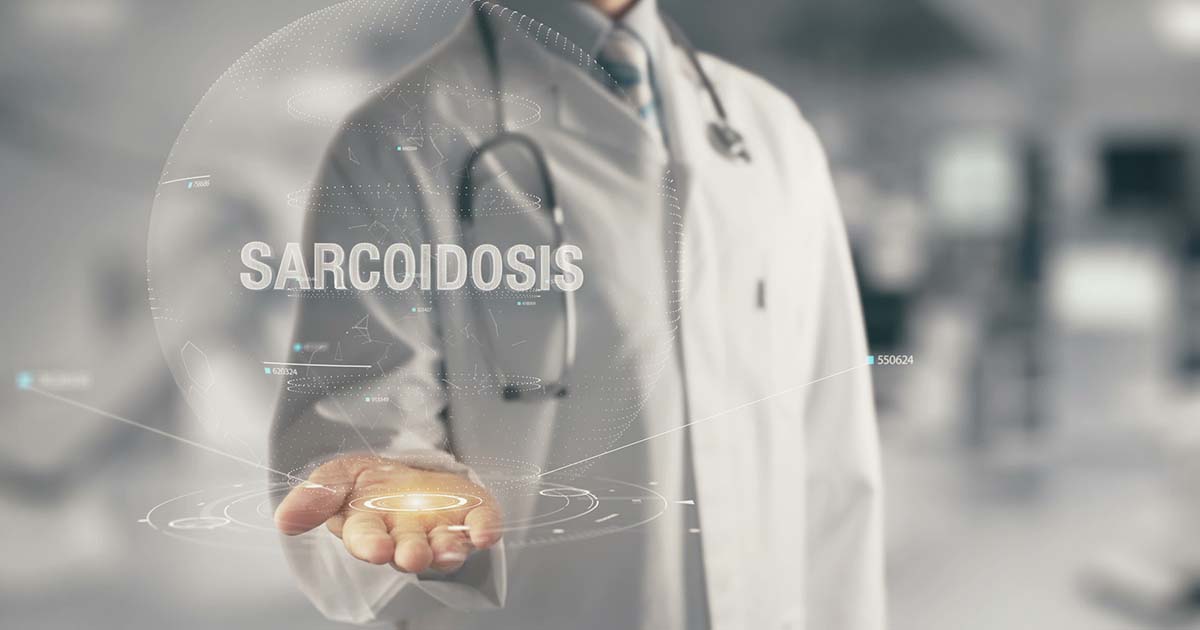Symptoms Of Sarcoidosis
Many diseases have a wide range of symptoms that make them hard to diagnose. In fact, many individuals suffer in silence for months or even years because they aren't sure their symptoms are indeed a problem. Sarcoidosis is a rare inflammatory disease that affects less than 200,000 individuals every year. Sarcoidosis is caused by collections of inflammatory cells in different areas of the body. These growths produce lumps called granulomas, which most commonly occur on the skin and in the lungs, eyes, and lymph nodes. Many don't even realize they have sarcoidosis until it's picked up on an imaging scan during a routine exam or test for another condition. There are a lot of varying symptoms of sarcoidosis, so it's important to research and understand the different ways the condition can manifest.
Swollen And Painful Joints

While less than one percent of patients with sarcoidosis experience joint pain, it's still something worth mentioning. There are many ways you can work to alleviate the symptoms at home, but talking to your doctor is important. Stiffness, soreness, and general tenderness can be treated through physiotherapy. Ask your doctor for the appropriate referral.
Sarcoidosis typically affects the knees, ankles, and feet. When the muscles in these joints become swollen, movement becomes painful. Although it may be easier to avoid any unnecessary movement, it's important to stay active and exercise routinely. Walking, swimming, and stretching can keep swollen and painful joints flexible.
Continue reading to discover more symptoms of sarcoidosis.
Heart Problems

Sarcoidosis can affect several major organs; although the lungs are most commonly affected, the heart can also be impacted. Cardiac sarcoidosis is caused by clusters of white blood cells formed on the heart's tissues. In these cases, granulomas most frequently form on the heart muscle, which leads to a variety of heart problems like irregular heartbeats (arrhythmias), palpitations, and edema. Chest pain, breathing difficulty, fatigue, and even fainting can be symptoms of cardiac sarcoidosis.
There are several treatment options a doctor may try depending on the symptoms and severity of the disease. The most common treatments are anti-arrhythmic medication, corticosteroids, and the placement of an internal cardioverter‐defibrillator (ICD).
Keep reading to unveil another symptom of sarcoidosis.
Nervous System Issues

In some cases, the brain is affected by sarcoidosis. Neurosarcoidosis affects the brain, spinal cord, and nerves throughout the body. Symptoms range from vision problems and mood swings to paralysis and seizures. Any nervous system issues are important reasons to see a doctor. When it comes to neurosarcoidosis, it's beneficial to be diagnosed and start treatment as soon as possible. Most cases of neurosarcoidosis are treated with corticosteroids, which reduce brain inflammation, alleviating most symptoms. Some neurosarcoidosis patients are completely cured on their own in a few years, while others may require prolonged treatment.
Keep going to learn more signs of sarcoidosis.
Enlarged Lymph Glands

Lymph nodes are part of our bodies immune system; they hold cells called lymphocytes, which produce antibodies and help us fight off infection. Swollen lymph nodes indicate there is an infection somewhere in the body. Swollen, tender lymph glands in the neck and chest can occur in cases of sarcoidosis. Enlarged lymph nodes on the chin, armpits, and groin can also appear.
The location of swollen lymph nodes can help guide doctors to the sarcoidosis. In the chest region, they may indicate either cardiac or pulmonary sarcoidosis. The presence of enlarged lymph glands helps doctors determine the stage of a patient's disease.
Continue to reveal another symptom of sarcoidosis now.
Skin Problems

A quarter of sarcoidosis patients experience skin problems, known as cutaneous sarcoidosis. Typically, a warm, tender, red rash made up of small bumps on the shins and ankles. Patients might also develop disfiguring lesions on the nose, chin, and ears. Bumps called nodules can also form under the skin. Sarcoidosis nodules are especially likely to form around pre-existing scars and tattoos.
Patients may also exhibit discoloration with patches of skin that appear lighter or darker than the rest of their body. The treatment of skin sarcoidosis can be frustrating for many patients. Surgical removal of lesions usually isn't effective, so doctors tend to recommend a range of topical and oral medications to reduce symptoms and discomfort such as redness and itching.
Continue reading to learn about the life expectancy of someone with sarcoidosis now.
Life Expectancy

Most individuals don't die from sarcoidosis. In fact, many patients who have it never even exhibit symptoms. However, if someone has pulmonary, cardiac, or neurosarcoidosis, the disease can cause organ damage that leads to future complications. There aren't many definitive studies about the average lifespan of someone with the disease because of its many variations, and the severity of each patient's case will ultimately influence their prognosis.
Treatment is generally effective in treating sarcoidosis, and working closely with your doctor and any specialists you're referred to is crucial to recovery. As it stands, sixty percent of patients fully recover from sarcoidosis within a few years.
